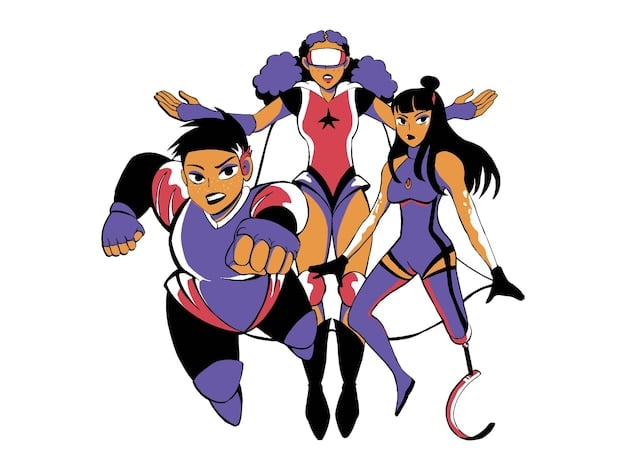Anime & Japanese Culture: Cultural Insights for US Fans

Anime and Japanese culture are deeply intertwined, and US fans often gain insights into Japanese customs, values, and social norms through their favorite shows, fostering a greater appreciation and understanding of Japan.
Anime has exploded in popularity in the United States, captivating audiences with its unique storytelling and vibrant visuals. But beyond entertainment, what are US fans really learning about Japan through anime? Exploring the intersection of anime and Japanese culture reveals a fascinating journey of cultural discovery for American viewers.
Anime as a Cultural Gateway
For many Americans, anime serves as their first introduction to Japanese culture. It’s a vibrant and accessible entry point that sparks curiosity and encourages further exploration of Japan’s rich history and traditions. The visual medium of anime makes cultural elements easily digestible and engaging.
Initial Exposure to Japanese Customs
Anime often subtly introduces viewers to everyday Japanese customs. From removing shoes before entering a home to the proper use of chopsticks, these seemingly small details can provide valuable cultural insights.
Understanding Social Interactions
Beyond customs, anime also offers glimpses into Japanese social interactions. The emphasis on respect for elders, the importance of teamwork, and the concept of “face” (saving reputation) are frequently depicted in anime narratives, giving US fans a window into Japanese social dynamics.
- Greetings and Bowing: The art of bowing and the specific greetings used in various social situations are often showcased.
- Senpai-Kohai Relationship: The hierarchical relationship between senior (“senpai”) and junior (“kohai”) is a recurring theme, highlighting the importance of mentorship and respect.
- Family Values: Anime frequently portrays strong family bonds and the responsibilities associated with family roles in Japanese society.
By observing these cultural nuances within the context of compelling stories, US fans can develop a deeper appreciation for the complexities of Japanese society.
The Representation of Japanese Traditions
Anime is steeped in Japanese traditions, from ancient mythology to contemporary practices. By showcasing these traditions, anime helps to preserve and promote Japanese culture to a global audience. US fans, in turn, gain exposure to aspects of Japanese heritage they might not otherwise encounter.

Mythology and Folklore
Many anime series draw inspiration from Japanese mythology and folklore, featuring gods, spirits (“yokai”), and legendary creatures. These stories introduce US fans to the rich tapestry of Japanese beliefs and their cultural significance.
Festivals and Rituals
Anime often depicts traditional Japanese festivals (“matsuri”) and rituals, showcasing the vibrant celebrations, cultural performances, and religious ceremonies that are an integral part of Japanese life.
Exposure to these traditions can spark an interest in learning more about their historical origins and their continued relevance in modern Japan. This leads to a richer understanding of the country’s cultural identity.
Learning Japanese Language and Etiquette
While watching anime, US fans inevitably pick up snippets of the Japanese language. They learn common phrases, honorifics, and even slang, providing a basic understanding of Japanese communication. This exposure can act as a catalyst for language learning. Furthermore, anime subtly teaches aspects of Japanese etiquette that are vital for effective communication.
Basic Vocabulary and Phrases
Repeated exposure to frequently used words and phrases in anime, such as greetings or expressions of gratitude, can help US fans build a basic vocabulary. This can become a stepping stone for more formal language studies.
Intonation and Pronunciation
Listening to native Japanese speakers in anime can also improve a fan’s understanding of intonation and pronunciation. This familiarity with the sounds of the language can make it easier to learn Japanese later on.
- Honorifics: Understanding the use of “-san,” “-sama,” “-kun,” and “-chan” provides insight into hierarchical social structures and levels of respect.
- Polite Language: Anime often demonstrates the use of polite language (“keigo”) in formal situations, helping fans recognize different levels of formality.
- Slang and Informal Speech: Exposure to slang through anime provides a glimpse into casual conversations and the nuances of informal language.
Although watching anime shouldn’t be considered a substitute for formal Japanese classes, it provides a valuable foundation and an enjoyable way to improve listening comprehension and cultural awareness.
Stereotypes and Misconceptions
It’s essential to acknowledge that anime, like any form of media, can sometimes perpetuate stereotypes or present a distorted view of reality. While it offers valuable cultural insights, it’s crucial for US fans to approach anime with a critical eye and avoid making sweeping generalizations about Japanese society based solely on what they see on screen.

Exaggerated Character Traits
Anime characters are often exaggerated for comedic or dramatic effect. This can lead to the misconception that all Japanese people are overly dramatic, hyperactive, or possess other stereotypical traits.
Idealized Portrayals of Society
Anime often presents an idealized view of Japanese society, glossing over social problems or presenting a romanticized version of traditional values. It’s important to recognize that anime is a form of entertainment and not a documentary.
By consuming anime critically and seeking out diverse perspectives on Japanese culture, US fans can avoid falling prey to stereotypes and develop a more nuanced understanding of Japan.
The Impact of Anime on US Culture
The influence of anime on US culture is undeniable. From fashion and art to language and social trends, anime has left its mark on various aspects of American life. This cultural exchange goes both ways, with US fans incorporating elements of Japanese culture into their own identities and lifestyles.
Cosplay and Conventions
Cosplay, the practice of dressing up as anime characters, is a popular hobby among US fans. Anime conventions provide a space for cosplayers to showcase their costumes, connect with fellow fans, and celebrate their shared passion for anime and Japanese culture.
Anime-Inspired Art and Design
Anime’s distinctive visual style has influenced art and design trends in the US. From graphic design to animation, the aesthetics of anime can be seen in various creative fields.
This cultural intercambio fosters mutual understanding and appreciation between the US and Japan, strengthening the bonds between the two countries.
Seeking Authentic Experiences
As US fans delve deeper into anime and Japanese culture, many feel a desire to experience Japan firsthand. This can lead to increased tourism to Japan and a greater interest in learning the Japanese language and customs. This pursuit of authentic cultural immersion is a testament to the power of anime in inspiring curiosity and fostering cultural exchange.
Planning a Trip to Japan
Anime can inspire US fans to plan trips to Japan, visiting the locations featured in their favorite shows, experiencing traditional Japanese culture, and interacting with local people.
Studying Abroad in Japan
Some US fans may choose to study abroad in Japan to immerse themselves in the language and culture, deepening their understanding and appreciation for Japanese society.
This desire for authentic experiences demonstrates the profound impact anime can have on shaping people’s perceptions and inspiring them to engage with different cultures.
| Key Point | Brief Description |
|---|---|
| ⛩️ Cultural Gateway | Anime serves as an initial introduction to Japanese customs and social interactions. |
| 🎎 Traditions | Anime showcases mythology, folklore, festivals, and rituals, enriching cultural understanding. |
| 🗣️ Language | US fans pick up basic vocabulary, phrases, and aspects of etiquette through anime. |
| ✈️ Authentic Experiences | Anime inspires travel to Japan and deepens interest in language and customs. |
Frequently Asked Questions (FAQ)
▼
Anime subtly introduces customs like removing shoes indoors and proper chopstick use. These details offer valuable cultural insights in an engaging way.
▼
Anime demonstrates honorifics (like “-san” and “-sama”), polite language (“keigo”), and the significance of bowing, vital for effective communication.
▼
Anime exposes fans to basic vocabulary, phrases, and pronunciation, laying a foundation for formal studies. It’s an enjoyable way to improve listening skills.
▼
Anime can sometimes perpetuate stereotypes or present idealized views of Japan. It’s essential to consume it critically and seek diverse perspectives.
▼
Anime’s influence is visible in cosplay, conventions, art, design, and even language trends. This cultural intercambio fosters mutual understanding.
Conclusion
Anime provides a unique and engaging window into Japanese culture for US fans. While it’s important to be aware of potential stereotypes and misconceptions, the cultural insights gained through anime can spark curiosity, foster appreciation, and ultimately lead to a deeper understanding of Japan.





